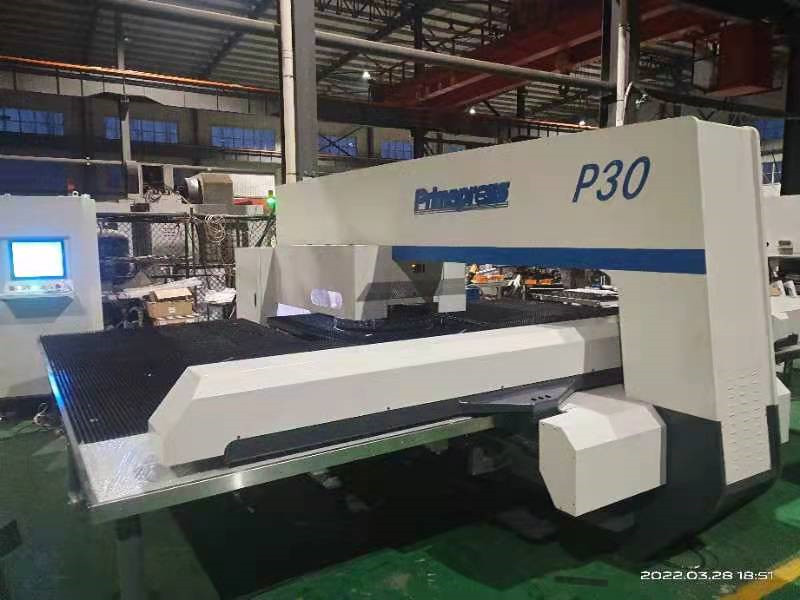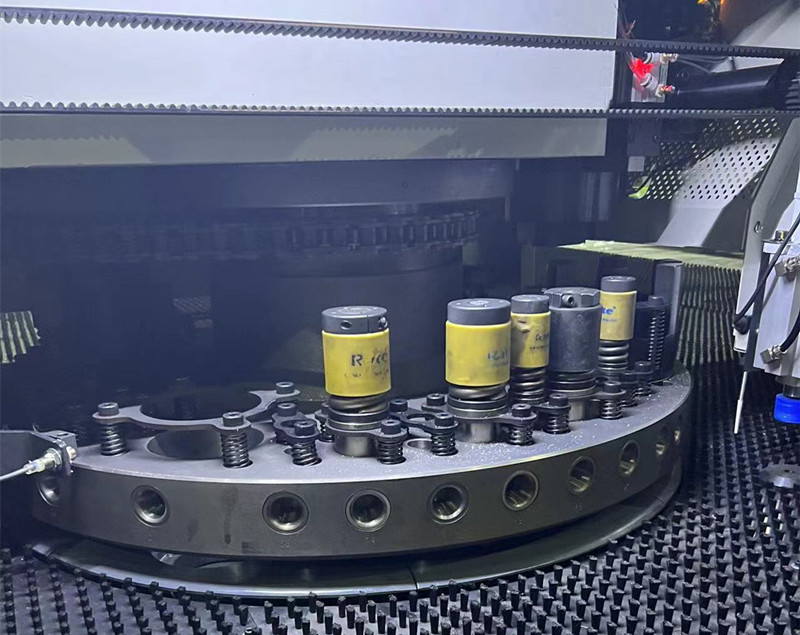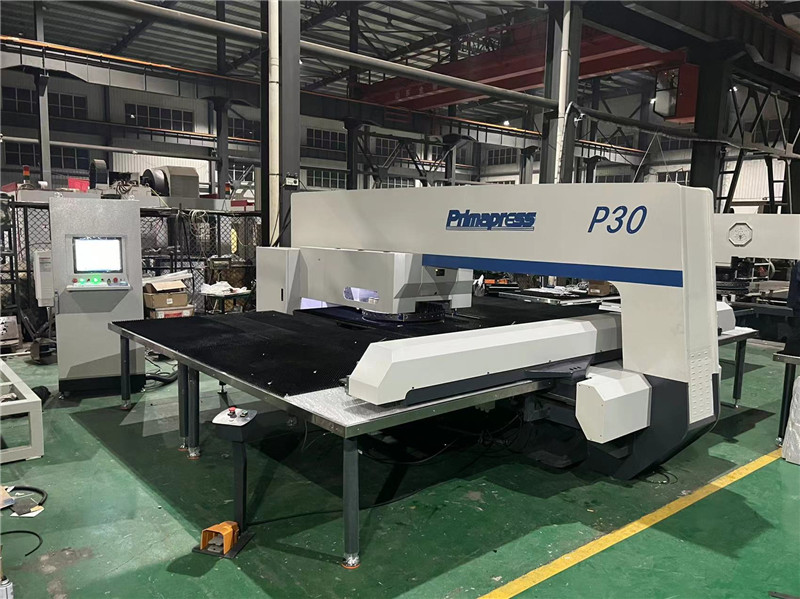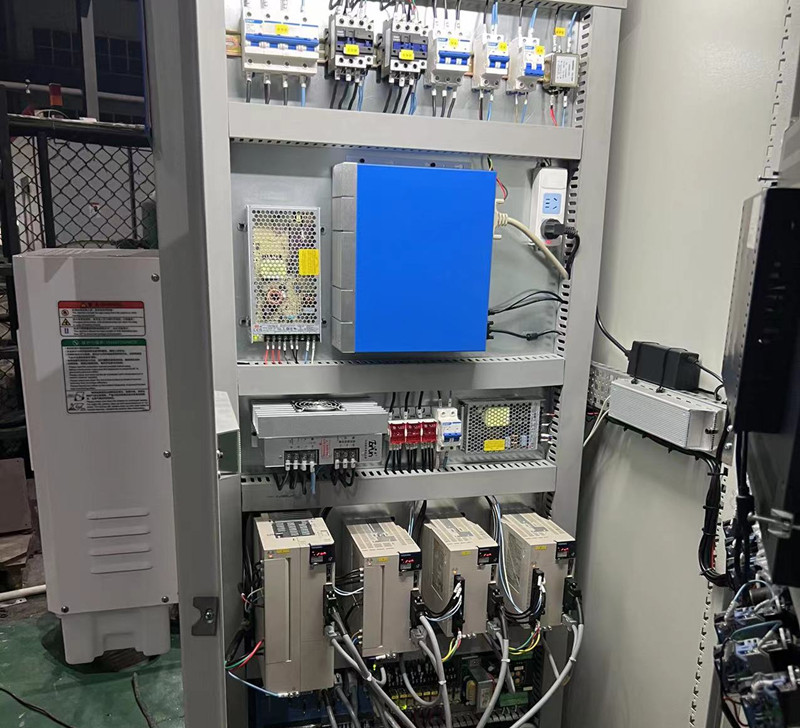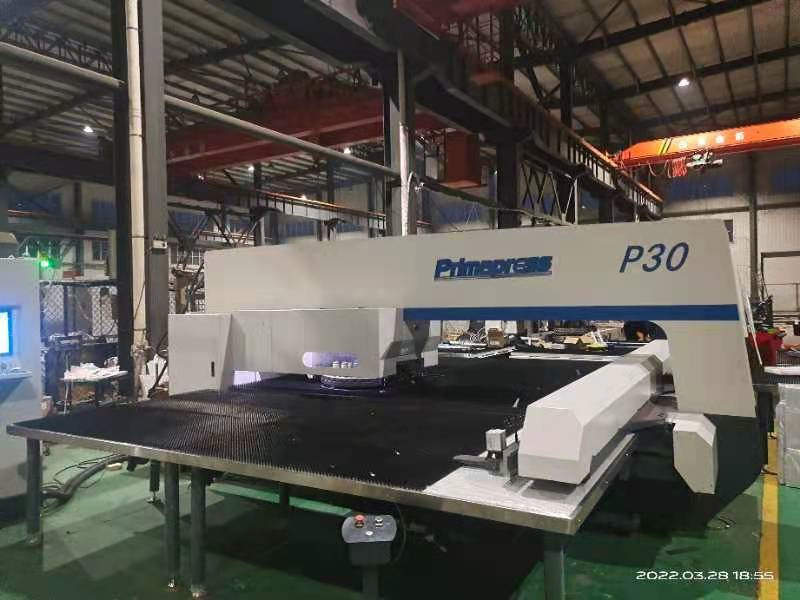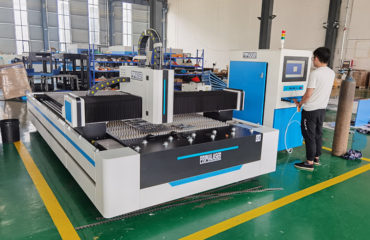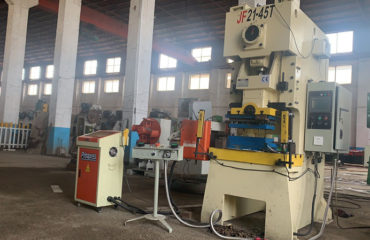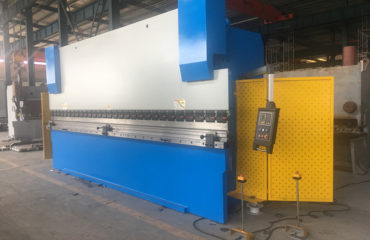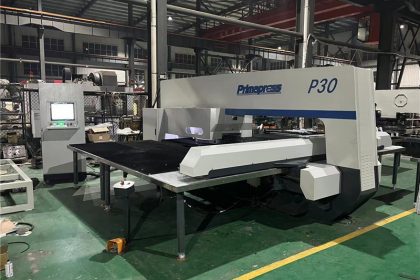
The development history and advantages of plate servo turret punch press punching machine
Servo turret punch punching machine is a composite sheet metal processing machine that adapts to the development of the times, and occupies an irreplaceable and important position in the sheet metal industry. At present, although the laser cutting machine has developed so rapidly that it occupies a certain market share, due to its own limitations, it has not replaced the position of the servo turret punch, and the servo turret punch still has many advantages in sheet metal processing.
The development history of plate servo turret punch press punching machine
Punch has a long history of development. Today, there are generally three types: mechanical punch, hydraulic punch, and servo punch. The mechanical punch has been proven in the market for a long time, and the crankshaft structure is the main force. The hydraulic press uses high-pressure hydraulic oil to act on the piston to push the piston to reciprocate to form a punching action, and the punching force is adjusted by the pressure of the hydraulic oil. On the basis of mechanical punching machine, various mechanical transmission structures have existed, such as crankshaft structure, connecting rod structure, etc., or it is not a simple structure, but a composite structure with multiple structures coexisting.
Crankshaft structure punch, the intermediate crankshaft part is simple in structure and easy to process, which is an advantage, but the disadvantage is also obvious, that is, there is a nominal force stroke, and the design punching force can be achieved within the nominal force stroke range. Outside the nominal force stroke range, the crankshaft If the force cannot be exerted, the conditions of use cannot be met, resulting in the impermeability of the iron plate, and the phenomenon of car jam will occur. After the car is jammed, it is difficult to deal with. Stalling the car can irreversibly damage the mechanical stability.
The application of the linkage mechanism in the punch press has changed people’s traditional understanding of the punch press and innovated people’s concept. The design of the linkage mechanism is more flexible, and the layout of accessories can be more reasonable. The simplest aspect is that it can set the length of the force arm, thereby changing the size of the punching force and taking advantage of the lever. “Give me a fulcrum, and I can move the earth” is the reason. For punches with different tonnages in the same series, the data adjustment in design is also more convenient, and this advantage is unmatched by the crankshaft structure.
The hydraulic system is applied to the punch press. At the beginning of its appearance, it revolutionized the punch press. The hydraulic punch has a constant pressure in the full stroke range, and there is no problem of the nominal force stroke of the crankshaft structure punch, so that some thick plates can be punched. , large holes, and deep drawing of thick plates, because punching these thick plates requires a lot of punching force. This advantage of hydraulic presses is also unmatched by other types of presses. Some people still stay on the inherent concept of hydraulic pressure in the early days, thinking that the hydraulic press is slow, which is the characteristic of large hydraulic special machines. Now the hydraulic press of about 30t adopts high-quality hydraulic valve parts such as servo proportional valve, and is equipped with high-quality controller. The stamping frequency can reach more than 1000 times per minute, which can greatly meet the needs of sheet metal production, but the biggest drawback of the hydraulic system is that the oil pollution is unacceptable.
With the in-depth development of the manufacturing industry, the sheet metal industry needs to carry out fine division of labor, such as the separation of thick plates and thin plates, the separation of iron plates and non-ferrous metal plates, and the separation of flat holes and deep-drawn holes. After being separated, different machines and equipment are used for processing, and the quality and efficiency are greatly improved. In this situation, the servo turret punch came into being.
Advantages of Servo Turret Punch
High speed, high precision and cleanliness are the biggest advantages of the servo turret punch.
At the source of kinetic energy generation, the mechanical punch uses an ordinary motor to drive the large flywheel to rotate continuously, and drives the crankshaft to rotate through the clutch to form a reciprocating motion, thereby realizing stamping. The stamping force comes from the inertial force generated by the high-quality flywheel rotating at high speed. The clutch mainly includes hydraulic clutch and pneumatic clutch. The crankshaft type servo press, in principle, cancels the common motor, flywheel and clutch of the mechanical press, installs the high-torque servo motor on the fuselage, directly drives the crankshaft to rotate, forms a reciprocating motion, and realizes stamping. In fact, the servo motor does not rotate continuously in one direction, but intermittently commutates and swings at high speed at the left and right positions near the bottom dead center. It is not necessary to return to the top dead center to waste time, and directly start stamping from a relatively low position, so as to achieve high-frequency stamping and stamping force. Determined by the torque of the servo motor. Sometimes, in order to reduce the cost and reduce the installation size, a small torque servo motor is used. At this time, in order to achieve the required stamping force, a reducer needs to be configured to increase the torque, so that the stamping speed will be reduced.
As a kind of sliding bearing, copper sleeves are widely used in punching machines, and copper sleeves are basically used in each rotary joint. The copper sleeve can play a very good supporting role, because it is in surface contact, and the force is surface force. Of course, there are also disadvantages, that is, there is a certain amount of friction, which will lose a small part of the power. In order to adapt to the development of high-speed punching machines, bearings are used instead of copper sleeves in the rotating joints of some punching machines, which has the advantage of reducing friction and power loss. But the disadvantage is also obvious. When the bearing is impacted, it is point or line force, that is, the steel ball or roller directly impacts the inner and outer rings of the bearing, which is easy to cause damage, so it is impossible to withstand a large punching force. But for high speed, there must be some trade-offs. For the servo turret punch, it is a punch specially designed for thin plates, most of which are below 30t, and the use of bearings will basically not adversely affect the punch.
The plate servo turret punch press punching machine produced by Primapress Company utilizes the latest RISC-CPU and full digital controller to obtain high-speed sampling (less than 1ms) and high braking accuracy of ±0.01mm repeatability, as shown in Figure 1. High quality and high precision pressure operation can be achieved with the Tool ID system built into the load cell preamplifier. The speed of the press is directly controlled by the servo motor to improve production efficiency. Setting up to 32 parameters stored in non-volatile flash memory enables programming of multiple components. It is the product of the combination of high and new technology (information technology, automatic control, modern electrical engineering, new materials) and traditional mechanical technology.
The servo press uses the power of the servo motor, has various functions such as speed change and execution, and has the characteristics of good controllability of the speed, directly drives the stamping mechanism, adopts adaptive torque control technology, computer control technology, digital technology and feedback control technology , Control the operation of the servo motor, can accurately control the position of the stamping head relative to the motor angle, and use the stamping mechanism to achieve a variety of stamping processes. By compiling different programs, various stamping motion curves required by the process are realized, different workpiece deformation speeds are obtained, the quality of the workpiece is guaranteed, and the service life of the mold is improved. Digital control makes the press truly enter the digital age.
Compared with traditional presses, the characteristics of servo presses are as follows:
(1) It can effectively improve the production efficiency, and its stroke length can be set to the minimum value required for sheet metal processing, which can realize the forming speed suitable for the processing content.
(2) The product has high processing precision, which can always maintain the accuracy of the bottom dead center, avoid burrs on the product, and prevent the production of defective products.
(3) The equipment has low noise and long service life of the mold. The machine equipment is equipped with a noise reduction device, the stamping is soft, and the noise pollution is greatly reduced; at the same time, the stamping distance between the die and the plate is controlled, and the working stroke of the die is minimized, thereby prolonging the service life of the die and greatly reducing the cost of use.
⑷The movement of the punch is controllable. Users can use this feature to program the movement of the pressure head suitable for sheet metal processing requirements, which can effectively improve the machining accuracy of parts and the stability of product quality, improve the service life and productivity of the mold, and can also achieve silent Punching, which can even expand the processing range, is suitable for processes such as punching, deep drawing, embossing and bending, as well as characteristic curves of different materials. For example, the stamping head can be stopped to maintain the pressure, and the rolling bead and rolling table production process can be realized, and the forming quality of the sheet metal parts can be greatly improved.
